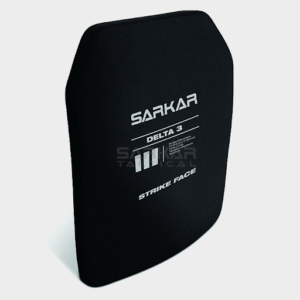
The many options available today may confound those looking for body armour. A potential buyer of body armour has a lot of information to comprehend, and it may take months of research to get exactly what you want. By providing you with some specific criteria to start your search, some help can occasionally reduce the amount of time needed to conduct adequate research.
Weight, Level Of threat, and Cost are the three main criteria to consider while choosing ballistic plates in the UK and Body armour that best meets your needs.
The most difficult aspect when choosing body armour is to comprehend the threat level. A certification scheme run by the National Institute of Justice (NIJ) might give buyers insight into what to expect from their armour. Body armour is classified according to threat levels in the NIJ system, which range from II to IV. The NIJ’s ratings are, in fact, more complex than simply stating that “level IV is better than level III” because that statement ignores other variables. The threat levels are numeric and indicate an armour’s capacity to stop a higher ballistic attack.
Testing Protocols
LEVEL II
Usually made of woven or fibrous materials like Kevlar, Dyneema, Twaron, and others, Level II armour is soft body armour. Level II is made to withstand the 9x19MM FMJ’s 1175 feet per second speed and the.357 Magnum Jacketed Soft Point’s 1400 feet per second speed. Although Level II soft body armour can normally sustain numerous spaced blows, you should always double-check the armour’s multi-hit functionality and threat-specific risk-stopping power! At least in comparison to what wearing soft body armour may be considered “pleasant,” Level II is typically quite flexible and comfy.
Level IIIA
The following level is Level IIIA. This rating is intended to stop the velocity of 44 Magnum Jacketed Hollow Points at 1400 feet per second. Level III-A armour is typically of the soft body armour sort, similar to level II armour, though stiff armour plates can sometimes be found with an III-A grade. They are frequently called “speed plates” since they provide one of the lightest alternatives while reducing some of the coverage range that soft armour rigs typically offer. An NIJ certification scheme covers III-A soft body armour, but III-A rigid plates are not.
Level III
We first see rifle plates (hard inserts) in level III of the NIJ’s level system. 7.62X51MM NATO (Full Metal Jacket) rounds travelling at 2,750 feet per second can’t penetrate six evenly placed Level III plates. This is comparable to the typical hunting round for the.308 Winchester rifle. It is crucial to recognise and realise that, with all NIJ armour ratings, a plate certified to stop a certain threat would not be able to stop a bullet of a lesser calibre. In truth, there are circumstances in which a bullet moving more slowly might be able to pass through some types of armour, whereas the same projectile moving more quickly might not.
These kinds of problems can make choosing armour more challenging, but purchasing a product without fully comprehending its potential uses will also be a terrible decision.
While the 5.56MM round used by AR-15s and other rifles may be considered “larger” than the 7.62x51MM NATO used to test level III armour, there are variations in the 5.56MM calibre that cause issues for specific armour materials. The M193 type can pierce steel, such as AR500, whereas the M855 “Green Tip” may pierce pure polyethylene plates. While bullet velocity affects penetration, these flaws are well understood. As a result, several manufacturers rate their plates with an III+ suffix.
Most manufacturers use the symbol III+ to denote protection from NIJ threat category III plus M855 and M193 threats. However, the NIJ does not recognise it. You should be wary of the grade because some less trustworthy companies will utilise the “+” designation to improve the apparent protection level of a plate, even though an III+ plate protects most of the attacks at a moderate weight and expense, making it a highly tempting option. Before making a purchase, confirm with the manufacturer what risks an III+ plate is rated to withstand.
Level IV
According to the current NIJ personal body armour specifications, Level IV rifle plates have the highest rating. The 7.62MM AP “Black Tip,” essentially a.30-06 armour-piercing bullet, must be stopped by a level IV weapon in one strike. Remember that a level III certification (6 shots) and a level IV certification (1 shot) have different shot counts. While having a higher numerical ranking, level IV may not always be preferable to level III, depending on the circumstances.
Materials
Each body armour style has benefits and drawbacks that fall into one of the three pre-mentioned selection categories: weight, threat level, and cost. It constantly returns to those. No armour should ever be described as “bulletproof” due to performance variations. Thus you should be cautious of any company that does. The only term that applies is “bullet resistant”.
Performance indicators vary depending on the materials. The biggest difference may be in weight because lighter armour costs more, often significantly more. The pricing will reflect your desire for the most lightweight materials and building methods currently accessible.
Conclusion
You must always strike a balance between weight and price while choosing the required armour. The benefits of lightweight armour cannot be stressed if you need to wear it for longer than a brief time.
In conclusion, decide what you need before you start looking for armour.
